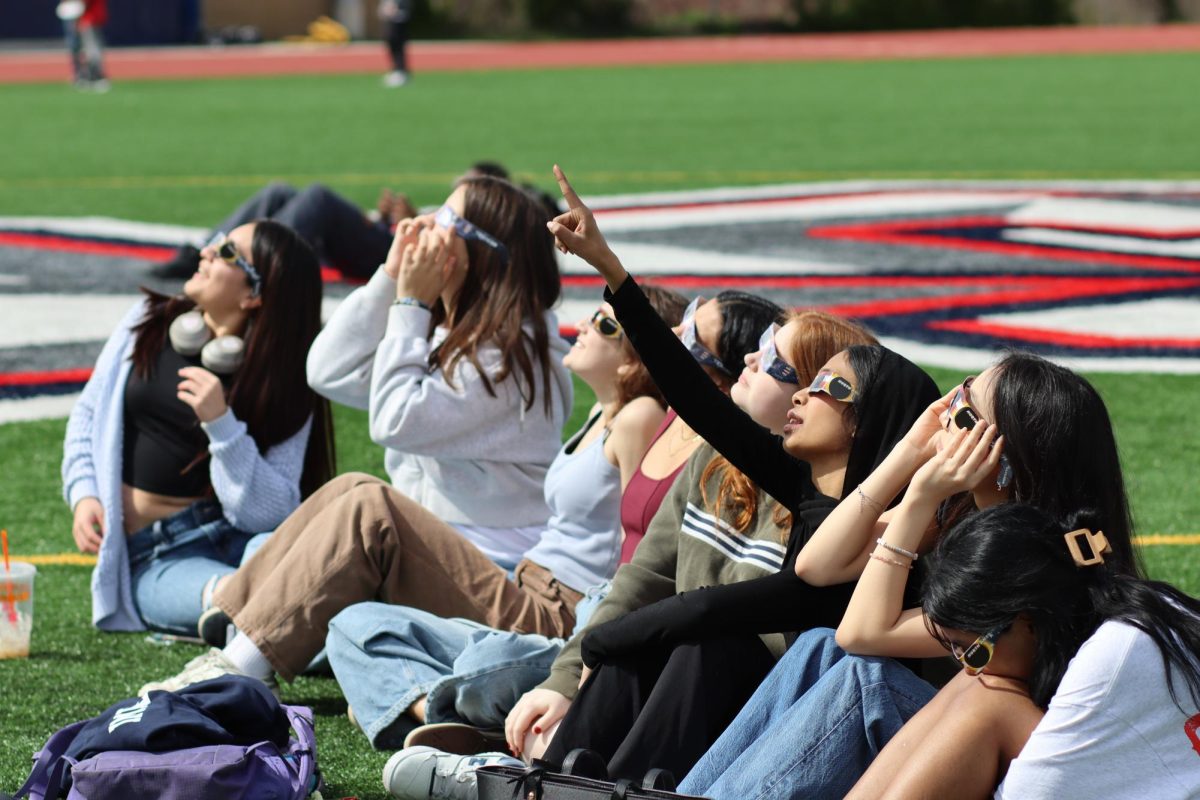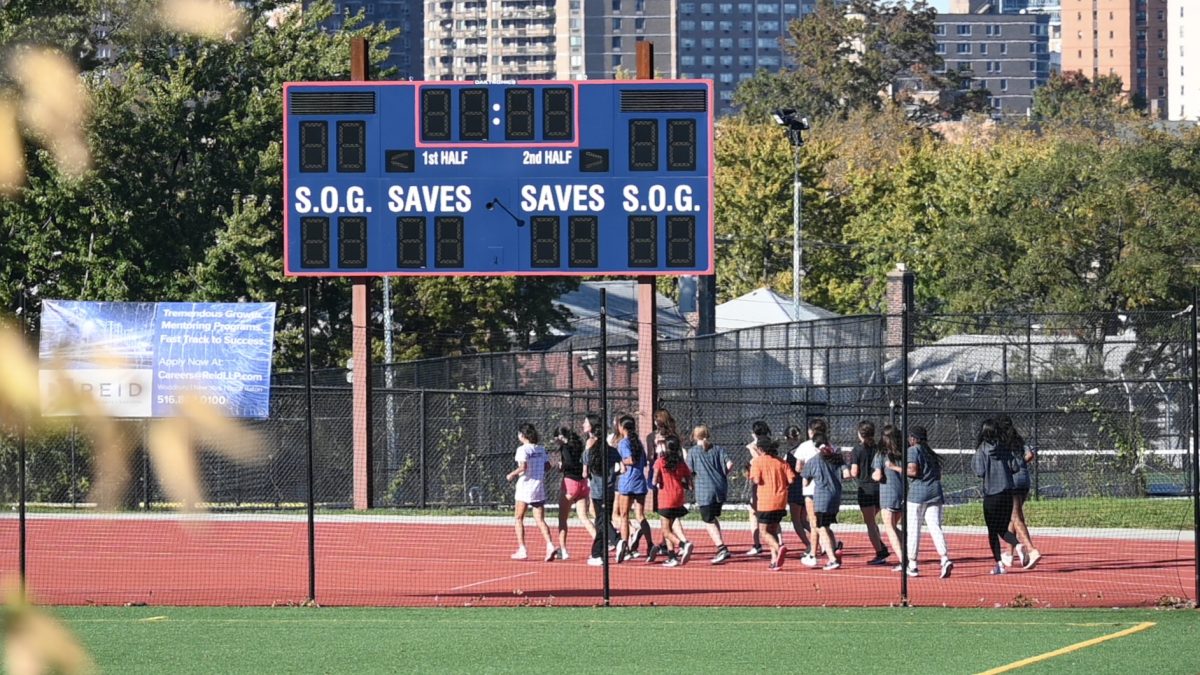
The school van of Townsend Harris is well-known among student athletes as the epicenter for team bonding. THHS is one of the only public schools in New York to provide a van for transporting its athletes to athletic events; its use is regarded as a privilege. However, a deeper look into common practices surrounding the van reveals multiple shortcomings and issues, ranging from unclean conditions to blatant safety hazards.
The van can legally hold 14 people, but certain teams have filled the van past this capacity on multiple occasions.
Fencing coach and English teacher Katherine Yan follows a policy of only transporting 14 of her 21 girls in the van, prioritizing starters, so that everyone has a proper seat. The remaining team members commute to games via public transportation. She said that sometimes other teams leave their equipment in the seats, making it even harder to fit everyone.
Ms. Yan said, “I have heard of teams piling and stuffing kids into the van, but I have not witnessed it. The most I heard was thirty…I think that is absolutely unsafe.”
Girls varsity soccer coach Bill Sioukas adopts a similar policy when using the van, prioritizing the transport of his starters. Coaches Yan and Sioukas argue that despite the van’s infamous reputation for breaking safety codes, if used properly, it is safe.
Members of seven teams have admitted to overfilling the van. Athletes and coaches alike have acknowledged this practice as a threat to their safety.
“People sat on each other’s laps and on the floor,” junior Ivanka Juran explained, recollecting the girls wrestling team fitting as many as 16 people in the van. “When you try to fit [about] 20 people into a limited number of seats, it creates an uncomfortable safety hazard.”
According to multiple members of the boys track team, they have fit a record of at least 28 people in the van at a time. These teammates have counted while inside the van.
Discussing the need to fill the van past 14 students, Boys track coach George Rio said, “That’s the only way we get to meets.”
Girls track team coach and math teacher Timothy Connor said that he used to fill the van past capacity, but hasn’t in a while. He recalled an incident where approximately twenty girls were in the van en route to a meet: “[I] didn’t like it. [You] get four in a seat. Yeah, one [sat on the floor], two, one sat on the tire wheel.”
Coach Connor says he hasn’t overloaded the van recently, but is aware of the fact that other teams fill the vehicle above the limit.
“I understand it does [happen] because you have to get there,” he said. “I usually have a lot more leeway because my whole team doesn’t have to be at the site at one time.”
He now tries to make two trips to meets, with help from the assistant coach.
“There were times when the van had to fit a majority of the swim team, which became very crowded,” commented sophomore Megan Wurtz of the girls swim team on limited access to seatbelts. “With people not wearing seat belts, it could be dangerous,”
Ellen Fee, the Assistant Principal of Organization, Health, and Physical Education, stated that the school’s policy mandates that every student wear a seatbelt while in the van, saying, “In the school van, the government requires that every passenger wears a seatbelt.”
Despite this, other students are subjected to travelling in crowded vans where they cannot even see, nonetheless use, the seatbelts in the vehicle, violating New York State law.
Under Section 1229-c(1) of the New York State Vehicle and Traffic Law, all children under the age of 16 must wear a seatbelt in the back seat of a vehicle. During almost every ride in the school van, student passengers ages 14-18 do not wear seatbelts.
Ms. Fee added that THHS athletes could use yellow buses, but the school would have to pay for them by charging students individually or use other funding sources such as the THHS Alumni Association.
The first van was a gift from the Alumni Association. Upon noticing how helpful the van was to the teams at THHS, Wanda Nix, former Athletic Director and physical education teacher, requested that the school purchase another one.
State regulations limit the ability of schools to own vans for athletic transport, which is why THHS cannot buy another van to prevent overcrowding. According to Coach Connor, THHS was “sort of grandfathered into using vans. We’re supposed to have school buses. We’re grandfathered in because we’ve had them for so long.”
He, like Ms. Fee, suggested using school buses, but there are other complications beyond funding.
“To have a school bus means that people have to have commercial driver’s licenses and I let mine go,” he said, also adding that it takes additional time and resources to have a staff member qualified to drive a bus.
Unsafe conditions raise concerns about potential accidents, and teams have been involved in several while commuting in the van. In the fall of 2012, the girls soccer team experienced an incident while running late through heavy traffic to a game at Bryant High School.
Coach Sioukas recounted the incident, saying, “The van was traveling ten miles per hour. I tried [to] avoid another driver and clipped a parked MTA bus.”
Although no one was hurt, the girls had to go on foot from the accident to Bryant’s field since the side mirror of the van had fallen off. The accident was reported to the school and the insurance on the van covered the damage.
In a more recent incident, the boys handball team was in a crash en route to a game.
Stanley Li, senior captain of the team, explained the event: “We were driving forward when a car suddenly cut us off from the right side trying to make a left turn. Our coach didn’t see the car make the turn and we T-boned the car…No one was injured, but we called the police and we waited for them to arrive and mitigate the whole situation for us.”
The City of New York pays for regular maintenance and any reported van mishaps. Physical Education teacher and Van Coordinator Ray Adamkiewicz takes the van to a repair shop whenever it needs to be serviced or fixed.
“We service the vans for all minor and yearly inspections, but there is also a City of New York agency set up with the Department of Sanitation, and we are eligible to bring up the vans over there [during the summer] for a full-service free of charge,” Mr. Adamkiewicz said.
Ms. Fee said that mishaps with the van are rare and thinks that the vans are an asset to student athletes. She said, “THHS athletes are already short on time to study, so [the van] allows for the athletes to use their time more efficiently.”
The school’s vans provide an efficient and beneficial mode of transportation when used correctly. Students and coaches, however, have voiced their concerns about safety.
Ivanka added, “[A solution is] ideally bigger vehicles, like buses, but I realize that there’s a limited budget.”
Concerns about using vans for transportation grew after a 2008 accident involving Stuyvesant High School’s track team. A van carrying members of two teams to a track meet at Dartmouth College flipped twice on Interstate 91 in Vermont. While all eight passengers had their seatbelts on, both the driver and athlete Lucia Hsiao suffered a fractured vertebrae, and athlete Valerie Piro was thrown from the car, causing her to be paralyzed from the waist down.
Hsiao and Piro sued, resulting in Piro winning $8.5 million in damages.
Ms. Fee said that the school has the licenses of every van driver and that the importance of safety is emphasized to them.
She concluded, “Staff members are constantly reminded that they are carrying ‘precious cargo’ and to take things safe.”































